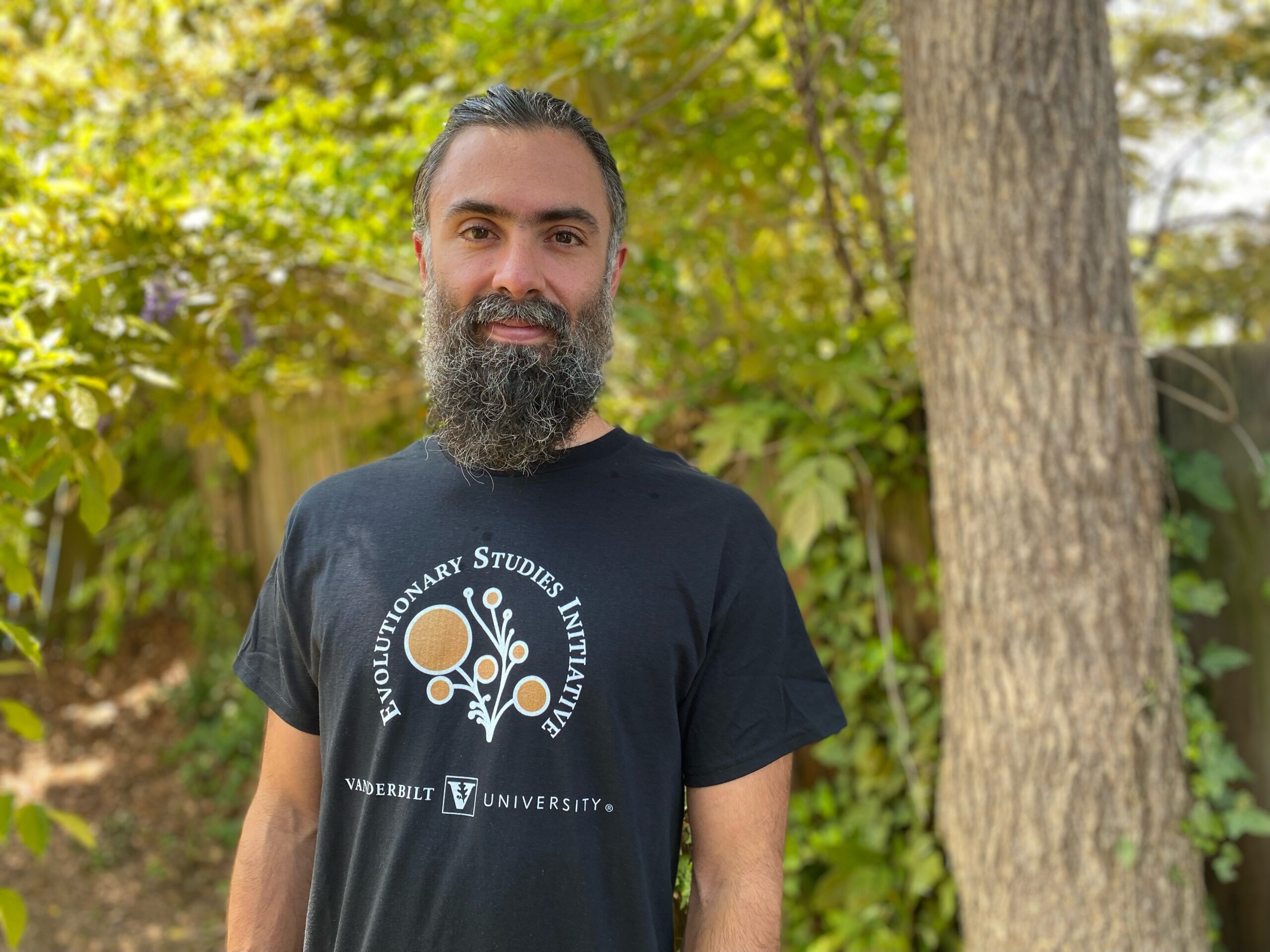Carlos Taboada Joins Vanderbilt University and Evolutionary Studies Initiative
By: Andy Flick, Evolutionary Studies scientific coordinator
Carlos Taboada is the newest member of the Vanderbilt University Evolutionary Studies Initiative. Taboada’s research focuses on the evolutionary biochemistry of animal coloration.

In Taboada’s words, “our lab lies at the interface of biochemistry, evolution, and visual ecology. We investigate the mechanisms that explain remarkable optical traits in amphibians, such as biological mirrors that amplify colored signals, the influence of fluorescence emission in the modulation of brightness, the convergent evolution of novel fluorescent proteins that make treefrogs green, and the physiological and metabolic mechanisms that make glassfrogs transparent.”
Taboada started his journey in academia at the University of Buenos Aires, Argentina. He completed both a B.S. and a Ph.D. there. During graduate school, he joined the Herpetology Division of the Argentinian Museum of Natural Sciences. This is where he picked up a keen interest in amphibian biodiversity.

Taboada explained further, “I became increasingly interested in one aspect of the diversity: the origin of the striking variety of colors and color patterns in neotropical frogs. At the time, I had a colony of the polka dot treefrog, a species with a unique leaf-like color that allowed them to blend in with the vegetation where they lived. What I found exciting was that their blood plasma and lymph were blue and that depending on the distribution of their lymph, the animals could change colors, from blue, to green and even yellow.”
While working on his Ph.D., he read Sönke Johnsen’s book “The Optics of Life,” which served as a catalyst for his research going forward.
According to Taboada, “I read it eagerly in a few days. After I finished it, I found myself thinking of many ideas to merge my passion for biochemistry, herpetology, and evolution and unify them in a visual ecology framework. I read his book during my second year of graduate school, and since then, I have been fascinated by optics in nature.”
Taboada then earned a fellowship that allowed him to take on a postdoctoral position in Johnsen’s lab at the Trinity College of Arts & Science at Duke University.
Taboada has made some interesting discoveries in his time studying the evolution of optics. One that he was really excited about was the ancestral function of a gene that now regulates leaf-like coloration in treefrogs.
Taboada explained, “what was shocking was that their ancestral functions were related to the regulation of blood coagulation and inflammatory reactions and had nothing to do with color creation. But that’s not all. I found that these proteins arose more than 40 times and even formed different gene copies. Also, they converged in their optical properties (they are blue/green and fluoresce in the infrared) but through other structural mechanisms. In my opinion, this is one of the most extreme cases of convergence in nature!”
Nashville is a great fit for Taboada as he joins us with a self-identified family of musicians. He also loves the nature available within a day trip around Nashville, specifically citing the mountainous countryside of middle Tennessee.
We are excited he is joining our group and can’t wait to see where his research goes next here at Vanderbilt!
